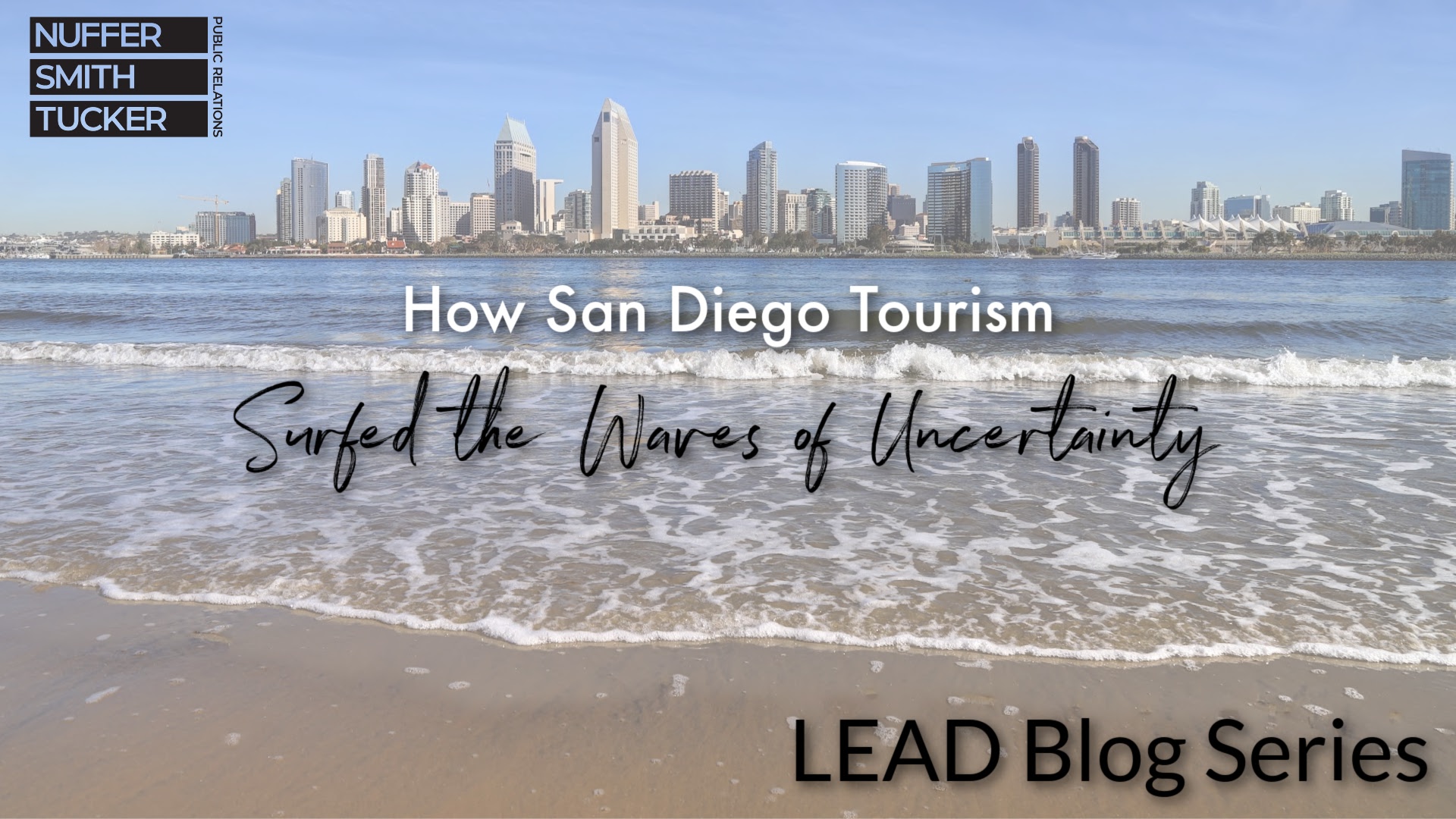The pandemic disproportionately impacted the San Diego tourism industry, affecting arts and culture throughout our region. Between the stay-at-home order, working from home, and our “new normal” – most of us found solace in movies, music, podcasts, Netflix-binges, etc., demonstrating just how important the tourism industry is to our quality of life and mental wellbeing.
Throughout the pandemic, conventions and large-scale gatherings were cancelled and leisure travel was limited, drastically harming the San Diego region’s tourism industry. With less airport vendors required, less flights booked, and less Comic Con superheroes and doctors at the convention center, San Diego businesses small and large felt the financial pinch.
But even as we slowly return to “normal” – albeit with mask in tow – the tourism industry looks different and may need additional time to fully recover. In fact, Kimberly Becker, president and CEO of the San Diego Regional Airport Authority believes travel won’t fully recover until 2024. While travel continues to recover, the San Diego International Airport is commencing its improvements with Terminal 1, which in 2019 served 11 million passengers. For about half of those who pass through San Diego International Airport, Terminal 1 provides their first – and sometimes last – impressions of San Diego, so the redesign will modernize and create a more efficient facility to improve the airport experience.
The San Diego Tourism Authority launched several campaigns to help mitigate this loss, including “Stay Diego” which targets locals to take a “staycation” to support local hotels and businesses, as well as “Happiness is Calling You Back,” which targets consumers interested in short weekend getaways and road trips to uncrowded outdoor destinations.
Thankfully, San Diego is lucky to have beautiful weather and high-quality outdoor venues, allowing for events and concerts to resume – lucky us. For other cities nationwide, outdoor seating can be complicated because of inclement weather that so often plagues the Midwest and East Coast. For organizations like the San Diego Symphony, the Rady Shell at Jacobs Park will continue to serve as a way for residents to experience arts and culture live – safely outdoors. Other organizations are following suit in organizing an influx of outdoor events and planning for increased outdoor event space.
In fact, the Port of San Diego, a longtime NST client, is championing the development of businesses for the prosperity of the San Diego Bay Waterfront across its member cities. Through this process, the Port is investing in major redevelopment and community infrastructure, as well as in start-ups and pilot projects so businesses can stay competitive in the global marketplace. The NST team is currently assisting the Port in its process to collect broad community input for the redesign of Pepper Park, a 5.5-acre park adjoining the Sweetwater channel featuring play equipment, a boat ramp and a well-equipped fishing pier with lighting for night fishing.
Other organizations, like SeaWorld San Diego, are creating more amenities to fill the arts and culture gap for San Diego. The Emperor, the tallest, fastest and longest dive coaster in California opened in March, as well as the new Sesame Place in Chula Vista.
But for other arts and culture organizations that have not been able to safely gather outdoors and host their regular events, they are focusing on other value-added opportunities for our community and residents. In fact, many organizations including San Diego LGBT Pride are centering themselves around the concept of purpose and values-alignment. While San Diego Pride raises funds primarily through festival ticket purchases, beverage sales, sponsorships and exhibitor fees – these funds support community philanthropy and fund human resources, internal trainings, programs and visible representation to a traditionally marginalized community.
And what’s art and culture without community? Fun without purpose. Looking to find your organization’s purpose? We’re happy to help.
Author’s Note
Information featured above was discussed during LEAD San Diego’s Impact program, a flagship professional development program for mid- to senior-level managers affiliated with the San Diego Regional Chamber of Commerce. The Impact program includes monthly, full-day workshops that focus on the industries that power San Diego and the issues our community may face.
Leading by example, several staff members and all our Leadership Team have completed LEAD San Diego’s Impact program, and Price Adams, executive vice president and partner, has also completed LEAD San Diego’s Advance Program, a seven-month course designed to address the gender gap in the C-suite and boardroom by empowering women leaders to leverage their strengths to make an impact in their personal lives, careers and communities.
A special thank you to all panelists, including Jim Lake, park president of SeaWorld & Sesame Place San Diego; Eugene Mitchell, senior vice president of diversity & community partnerships at Sempra Energy: Kimberly J. Becker, president & CEO of San Diego County Regional Airport Authority; Jason Paguio, president & CEO of the Asian Business Association of San Diego; Rip Rippetoe, president & CEO of the San Diego Convention Center Corporation; Carlos Cristiani, executive director, shortlist phase of San Diego/Tijuana World Design Capital 2024; Martha Gilmer, CEO of San Diego Symphony; David Glanzer, chief communications & strategy officer of Comic-Con; and Fernando Z. Lopez, executive director of San Diego LGBT Pride.

